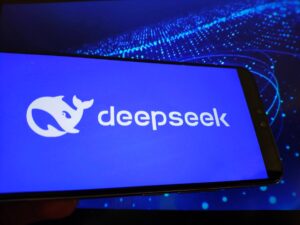Analyzing Grok 3: An AI Model Poised to Transform the Industry

Introduction to Grok 3
Less than two years after its launch, xAI has introduced Grok 3, which is being hailed as one of the most advanced AI models available today. Although details about Grok 3 are still limited—there are no published papers or technical reports yet—it currently outperforms or matches other leading AI systems according to various benchmarks and user tests, including ratings in Chatbot Arena. Notably, training for Grok 3 isn’t even finished yet, which leaves room for further advancements and improvements.
The Impact of Competitive Pressure
Speeding Up Development Cycles
As more AI labs enter the race, the pace of model releases is likely to quicken. Elon Musk, the founder of xAI, mentioned that users could notice “improvements almost every day” due to ongoing updates to Grok 3. Analysts predict that competition from other companies, like DeepSeek, and the evolving regulatory environment will prompt established AI labs to accelerate their release schedules.
Advantages for Users:
- Access to the latest model improvements frequently.
- Opportunities for organizations to leverage cutting-edge AI features without long waiting periods.
- Challenges for Developers:
- Variability in model behavior across releases can disrupt expected outcomes.
- Organizations may need to create custom evaluations to ensure that new updates maintain application integrity.
Understanding Scaling Laws
Recent developments highlighted by competitors like DeepSeek-R1 have brought scrutiny to the massive investments in AI infrastructure by leading corporations. However, xAI’s rapid rise showcases that substantial investments in AI supersystems like the Collosus supercluster located in Memphis can lead to significant breakthroughs—such as the quick training of Grok 3.
While it is clear that scaling benefits performance, analysts stress that further insights are needed to understand the full range of techniques contributing to Grok’s success. Musk has hinted at additional factors influencing Grok 3’s performance beyond mere scaling.
The Shift Towards Open Source
There’s a growing trend in the AI community towards open sourcing large language models (LLMs). xAI has already made Grok 1 open source. Musk states that the intention is to open source all models except the most recent one. So, once Grok 3 is fully released, Grok 2 will be available for public access. This idea of open sourcing models is also being considered by other companies, like OpenAI.
However, xAI plans to keep some functionalities of Grok 3 under wraps to prevent competitors from easily replicating their technology. Instead, a summary of the model’s reasoning processes will be made available, similar to strategies used by other leading companies in the AI sector.
Evaluating Grok 3: User Responses
While Grok 3 has received impressive evaluation results, responses from users and experts have varied. For example, AI expert Andrej Karpathy remarked that Grok 3’s reasoning capabilities are on par with state-of-the-art models, although it falls short in certain specific areas, such as coding or understanding complex vector graphics.
Some users have highlighted notable shortcomings in Grok 3’s coding abilities when compared to competitors, while others have shared instances where it excelled.
Conducting Your Own Tests
When assessing a new AI model, it’s advisable to conduct thorough tests tailored to your organization’s specific requirements rather than relying on initial impressions from a single prompt. Developing a consistent testing strategy may help you effectively measure the model’s performance for your needs, ultimately ensuring that you maximize the benefits of advanced AI technologies like Grok 3.
In an evolving landscape of AI capabilities, keeping pace with these advancements while applying rigorous testing will be vital for organizations striving for effective deployment.






